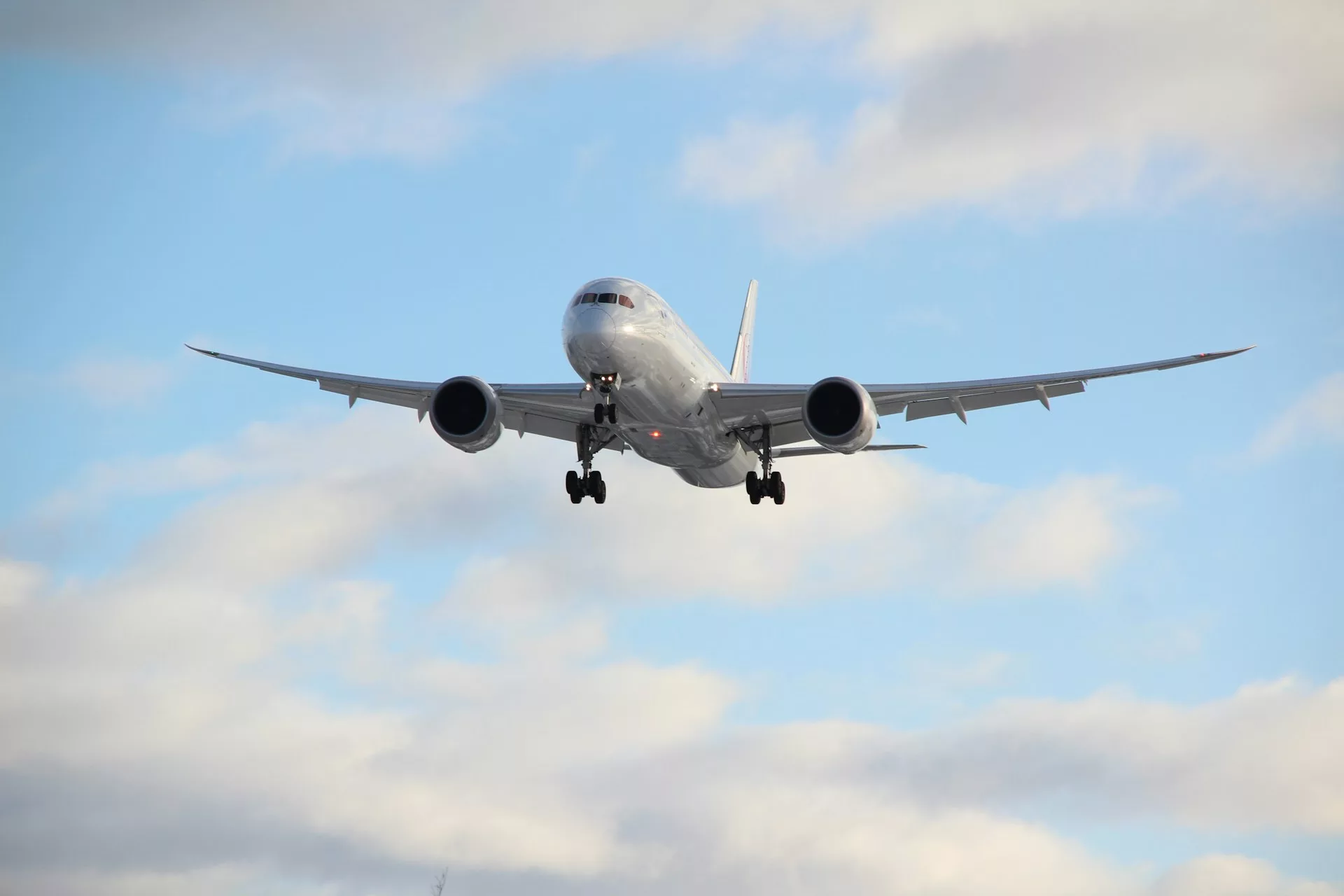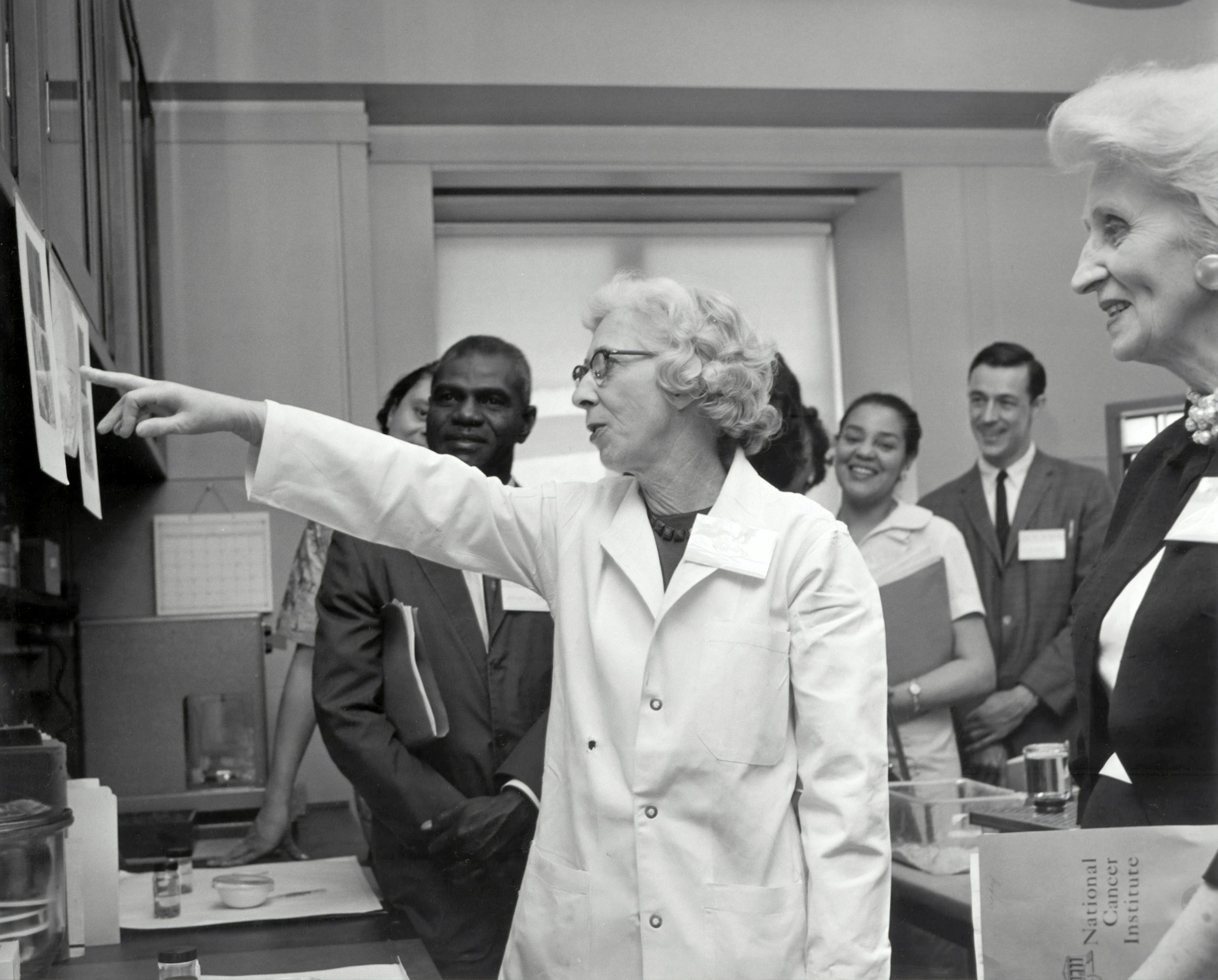Flying poses a particular risk to cabin crew— they are exposed to much higher radiation levels than the average person. However, current legislation may not be doing enough to combat this. Photo credit: Artturi Jalli via Unsplash
This article was written by Olivia Allen and Enis Gerxhalija
When flying 40,000 feet above the ground, the last thing you are probably worrying about is cosmic radiation passing through your body; you’re likely more focused on the amount of legroom you have or the jet lag you will face after landing. And rightly so if you are an infrequent flyer. Few know that, in fact, aircrew typically receive more radiation exposure than workers at nuclear facilities. Understanding why this is is crucial in understanding the risks posed to seemingly radiation-free travel.
The Earth is constantly being bombarded with cosmic high-energy charged particles, x-rays, and gamma rays produced by stars, including our sun. This cosmic radiation is measured in sieverts (Sv) or millisieverts (mSv), with one Sv defined as carrying a 5.5% increase in the chance of developing radiation-induced cancer later in life. Luckily, the Earth’s magnetic field is highly effective in deflecting this cosmic radiation. Only the highest energy particles get through. The amount of cosmic radiation that passes through the field varies depending on several factors. One of these is altitude; as the atmosphere thins the higher up you get, higher altitude means less atmospheric protection from cosmic particles. Typical aircraft cruising altitudes can create exposure levels 100x greater than at sea level, as shown below.

The less atmosphere and magnetic field you have above you, the less protection you have against cosmic radiation. Photo credit: Lachlan Bradley, The Oxford Scientist
Factors such as latitude and the Sun’s activity (the solar cycle) are significant too, with exposure to cosmic particles increasing towards the poles. The solar cycle — whereby every 11 years (give or take), the Sun’s magnetic field flips and its north and south poles switch places — alters the solar radiation we receive on Earth (see figure below). This then leads to solar maxima and minima, where the radiation we receive is at its highest and lowest, respectively. Understanding and predicting this cycle remains a hot topic in astrophysics as we enter the Sun’s next field reversal, which is predicted to occur in 2025. It is worth noting that modelling cosmic radiation accurately has proven notoriously difficult in the past. NASA predicted the biggest solar maximum since 1958 to occur in 2010 — only to receive the weakest on record in 2014. Rather counter-intuitively, solar maxima decrease the cosmic radiation from outer space. Still, too much, and we soon find ourselves in 1859 again, when a solar storm dubbed the “Carrington Event” set telegraph offices on fire due to changes in the geomagnetic field. Other notable factors in the geomagnetic field outside of the solar cycle can mean that the Earth’s magnetic field is weakened in certain areas, most famously the South Atlantic Anomaly.

The same flight at the same speed and altitude can expose you to up to 50% more radiation depending on when in the solar cycle it’s taken. Photo credit: Lachlan Bradley, The Oxford Scientist
The health risks associated with exposure to cosmic radiation are somewhat controversial. The World Health Organisation (WHO) says that ionising radiation has been linked with an increased risk of cancer as well as potential reproductive problems. That being said, there is still some disagreement about the effects of radiation that aircrews are exposed to while on duty. In 2017, the general UK guidance regarding ionising radiation exposure for over 18s was to stay below 20mSv per year. To put this into context, exposure to a single chest x-ray would be around 0.01mSv. When airlines follow guidelines, aircrew members should be well within this limit. However, other factors need to be considered. Exposure of foetuses to ionising radiation whilst inside their mother is also a risk, as the abdomen provides no shielding from radiation. What is more concerning, foetuses are particularly vulnerable to ionising radiation, given their rapid rate of cell division. When a cell divides, the DNA is splayed out, creating a larger target cross-section for the radiation to hit. This is the basis of radiation therapy in cancer; the rapidly dividing cells are more susceptible to the effects of radiation and, therefore, will be targeted over the healthy cells. For this reason, it is vital that aircrew who are pregnant tell their employer so they can be thoroughly informed of the potential risk to their foetus, and cosmic radiation exposure can be further limited. EU guidelines state that exposure for pregnant women must be kept below 1mSv.
The health risks associated with exposure to cosmic radiation are somewhat controversial.
Several studies have been carried out regarding the effects of cosmic radiation on flight crews. One example, the Harvard Flight Attendant Study, concluded that the risks of radiation exposure, coupled with the disruption of sleep cycles and on-board chemicals, all contribute to occupational health issues within cabin crew, and links factors to job-associated cancer risks. Another study conducted by the Australian government concluded that there was a higher prevalence of specific cancers, such as breast cancer and melanoma, among flight attendants compared to the general population with a similar socio-economic status.
A key turning point in the awareness of cosmic radiation exposure in aviation came with a landmark Korean lawsuit in 2023 that ruled that the death of a flight attendant in 2021, due to stomach cancer, was, in fact, directly caused by consistent exposure to cosmic radiation. This is the first ruling of its kind for the industry and the first time a labour body in South Korea has officially stated the association between cosmic radiation and cancer. The flight attendant had been flying with Korean Air for 25 years, spending over 1000 hours in the air annually. Roughly half of his shifts were long haul routes, passing over the North Pole, increasing his exposure levels (as shown in the figure below). Korean Air claimed that there was no link between his occupation and the cancer, stating that they restrict cabin crew exposure to 6mSv annually. However, the ruling went the other way, and it was recognised that there was a causal link between the cancer and radiation exposure. A number of the attendant’s colleagues were also having time off work from sickness related to cancers such as blood and breast.
A key turning point in the awareness of cosmic radiation exposure in aviation came with a landmark Korean lawsuit in 2023 that ruled that the death of a flight attendant…caused by consistent exposure to cosmic radiation.

Direct routes to and from South Korea and the east coast of the USA pass over polar regions, where the ambient radiation dose is much higher. Photo credit: Lachlan Bradley, The Oxford Scientist
In the same way doctors must step out of the room during a CT scan, but the patient does not, monitoring the length of radiation exposure needs to take place for aircrew but not for passengers. Just as a one-off scan carries minimal risks, occasional air travel does not expose you to levels of cosmic radiation you should be worried about. But like being in the room for ten CT scans a day over a 50-year career is not safe for doctors, which they mitigate by stepping out of the room to limit exposure, the same sort of safety regulations needs to be introduced for aircrew. To keep this monitored, computer models have been developed that calculate the theoretical exposure for different flight paths. A number of different models exist, with the EU, Japan, and the US all having their own. One such model, the US Federal Aviation Authority’s CARI — 7, was used to calculate the graphics in this article via the Amentum Scientific ‘Aviation Radiation’ API. These models are used to track how much radiation crew members have been/would be exposed to on certain flight paths so crew rosters can be planned accordingly.
Even where monitoring occurs, there are no international regulations on exposure levels. Only in the EU and, more recently, South Korea are there any legal mandates on the maximum levels of exposure and the monitoring of this. On an international scale, the International Commission on Radiological Protection (ICRP), a non-governmental body that gives guidance on all aspects of protection against ionising radiation in sectors, provides a general guide on radiation protection in aviation. They recommend that both flying time limits and optimal route selections be used to ensure that crew exposure levels stay below 20 mSv annually. This, however, is simply guidance to individual countries and organisations. Beyond this, the International Civil Aviation Organisation (ICAO) requires that all aircrafts intended to be operated above 49,000ft must carry equipment to measure and continuously indicate the total dose of cosmic radiation received each flight. These measures all give airlines the capability to track the exposure of their crew, but that doesn’t necessarily mean the necessary monitoring is happening.
Even where monitoring occurs, there are no international regulations on exposure levels.
The EU has had legislation in place since 2000 stating that airlines have to assess the exposure of their aircrew. They must ensure that all crew members are informed of the potential effects of cosmic radiation, and any crew member who is flying enough flights to mean that their exposure may pass 1mSv must be assessed. Flight schedules are supposed to be decided by the airline, taking these rules and exposure levels into account. The legislation is a big step in the right direction towards the protection of crew members. However, issues still lie within the enforcement and tracking of whether airlines are actually following this law. South Korea has recently joined in, with a local news outlet, The Korean Times, reporting in June this year that a new law mandates air carriers must limit their crew exposure to below 6mSv annually, with violators being fined up to 6 million won (roughly £3.6 thousand). This law comes just after a legal case regarding a crew death being ruled to be due to cosmic radiation. The South Korean government has not stated links between the legal case and the new law. The figure below shows how much radiation these laws allow cabin crew to be exposed to relative to a chest x-ray.

Radiation dose chart: one hexagon = 0.06 milliSieverts. Photo credit: Lachlan Bradley, The Oxford Scientist
The next predicted solar maximum brings a reduction in cosmic radiation. By coincidence, it meets a tragic world event: the Russian invasion of Ukraine. By forcing many airlines to avoid Russian airspace, the war has redirected many polar routes, such as the ones that contributed to the death of the Korean flight attendant. Although new routes through the North Pacific take longer, they avoid the highest latitudes and, therefore, the highest doses, as illustrated below. However, once usual flight paths are resumed, crew on these routes will be exposed to higher radiation levels once again.

By avoiding Russian airspace and therefore the north pole, the new route between Seoul and New York exposes crew and passengers to 12% less radiation. Photo credit: Lachlan Bradley, The Oxford Scientist
Is the stricter legislation implemented enough to protect aircrews and prevent another Korean Air incident from happening? Whilst it is a step in the right direction, the consequences of breaking such laws remain low compared to the environmental and economic savings from the lower fuel usage when through the thinner atmosphere 10,000ft higher. What is more, in a recent 2019 survey received by 400 Belgian aircrews, 66% were never informed by their employers about the safety concerns, and 17% of the pregnant female crew continued to fly whilst expecting. So, it seems the answer is no — even with some guidelines in place, some airlines continue to disregard guidelines. Stricter legislation is needed to ensure the protection of the aircrew.





